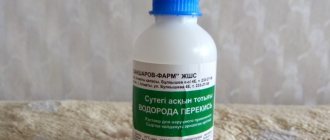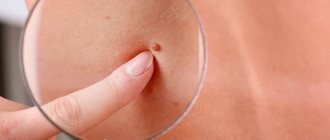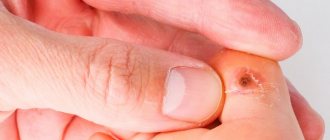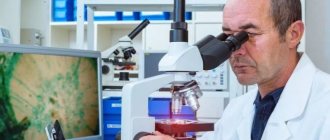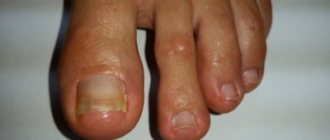Warts, or medically called viral warts, are benign skin growths that occur due to infection with the human papillomavirus (HPV). After HPV enters the skin, it actively multiplies in the superficial and deep layers of the dermis, resulting in warts.
Considering the viral nature of the appearance of formations and the absence of specific pathogenetic drugs against HPV, the only way to get rid of warts is to remove them! There are no other treatment options yet. In addition, removing warts is the most reliable way to prevent their further spread.
Warts can be localized on various areas of the skin of the face and body. They can occur both in older people and at a young age.
Warts are usually not accompanied by any symptoms, but can grow quickly, especially with constant trauma (for example, on the sole), actively spread and appear even on the face.
In addition, the presence of warts can cause not only physical, but also psychological discomfort, especially if they are localized on exposed parts of the face and body.
When should a mole be removed?
There are several main reasons why experts recommend removing pigment formations:
- One of the most common reasons for visiting a surgeon is the unaesthetic appearance of a mole. Especially if it is located on the neck, face or other open areas of the body. Some moles are too large, which can also negatively affect the aesthetic perception of appearance.
- Large convex moles, as well as pedunculated papillomas, should be removed as they become easily traumatic objects. Damage to the tumor can give rise to the development of infection, which will lead to unpleasant consequences.
A person needs to understand that all benign formations on the skin carry a certain amount of risk, since they can degenerate into malignant ones. In this matter, much depends on genetic predisposition, the type of education itself, the level of ultraviolet radiation received by it and other factors. Regarding the removal of moles, you should consult with specialists.
Causes of warts
The main cause of warts on the human body is the human papillomavirus (HPV), which is very common and highly variable. In total, more than one hundred and fifty types of HPV are known, but only a few of them lead to the appearance of warts. The background that provokes HPV infection and the development of tumors on human skin are the following factors:
- Weakened immunity.
- Chronic diseases.
- Constant stress.
- Poor nutrition.
- Damage and diseases of the skin.
The “gate of entry” for HPV can be microtraumas - wounds, abrasions and cracks in the skin. Therefore, the method of transmission of the virus into the human body can be carried out by touching the patient or using the same objects with him - for example, a computer keyboard. You can often catch the virus in a bathhouse, swimming pool or gym.
Another source of infection is sick animals. Workers involved in cutting meat or fish are especially at risk; when infected, their hands, fingers and forearms are most often affected.
Warts grow quickly and can spread across the skin. If a neoplasm is injured, there is a possibility of spreading and new forms appearing on the skin. In addition, with frequent trauma, constant pain occurs in the area of the wart, which can cause physical discomfort. If you self-medicate, scars may remain on the skin. In addition, with constant trauma, warts can become malignant.
Laser mole removal: specifics and features of the procedure
Laser surgery became widespread in the mid-80s and early 90s of the last century. Its advantage is to minimize damage to surrounding tissues during manipulation. Removing a mole with a laser beam is characterized by high speed and rapid restoration of the skin layer after the procedure.
The essence of laser mole removal is to evaporate the mole from the skin using a directed laser beam. It evaporates the cells of the mole layer by layer, practically without touching the healthy tissue of the epidermis around. In addition, exposure to the beam helps neutralize bleeding. The skin reacts relatively well to this type of intervention: active cell division contributes to the rapid filling of the affected area with healthy skin.
Laser removal is performed using local anesthesia, the effect of which can last from 30 to 180 minutes. The procedure itself takes 10-15 minutes. The small wound left after the procedure heals within 2-4 weeks. Your doctor may write a prescription for ointments that will speed up the healing process.
Important! The patient is advised to strictly follow medical recommendations after laser removal. This will help avoid possible complications. There are several prohibitions on the list:
- Do not expose the injured area of skin to mechanical stress;
- peel off dried skin from the wound (it should heal completely and fall off on its own);
- apply cosmetics to damaged skin;
- visit the pool, swim in open water, go to the sauna.
In addition, a special sunscreen should be applied to the damaged area before going outside if the mole was removed from areas of the skin not covered by clothing.
Classification
We have prepared for you a detailed classification of warts. In modern clinical practice, the following types are distinguished:
- Vulgar warts. Multiple painless nodes up to 0.8 cm in diameter with keratinization on the surface. Such warts are often located on the dorsum of the hands and feet. They are caused by HPV types 1-4 and others³.
- Filiform warts. A type of vulgar warts that are located on the face². Most often appear in the area of the lips, nose, and eyes². They look like thin outgrowths. Occurs as a result of infection with HPV types 1-4.
- Periungual warts. These are thickenings with cracks that look like cauliflower. Located around the nail plate. Such formations occur in people with the habit of biting their nails or in those who work with their hands in water. Another name is “butcher’s” warts. They are caused by human papillomavirus type 7³.
- Palmoplantar warts. Round papules that can only appear on the thick skin of the palms and soles². Such warts cause pain to the patient when pressing and walking. Their appearance is promoted by HPV 1, 3 and other types.
- Mosaic plantar warts. They look like areas of excessive keratinization on the skin of the soles². Often such warts can be covered with cracks and cause discomfort to the patient. Mosaic plantar warts result from infection with HPV types 2 and 4.
- Cystic warts. Formations in the form of soft nodes with white-yellow curdled contents, as well as with cracks on the surface. They are localized in places of greatest pressure from the bone structures of the foot on the skin. Such warts are rare and are caused by HPV type 60³.
- Flat warts. Small papules with a diameter of 2-4 mm. The formations are flat, hyperpigmented or the color of healthy skin, always located in groups. Mostly appear on the face, back of the hands, and forearms. Flat warts are caused by HPV types 3, 10 and 28.
The main advantages of laser mole removal
- The laser beam can be used on any part of the body. The procedure is suitable even in cases where the possibilities of using other methods are very limited. For example, in cases of removal of papillomas on the eyelids, mucous surfaces of intimate areas, etc.
- Preliminary local anesthesia makes the procedure completely painless. The removal process lasts a few minutes and is quite easy to handle.
- Healing and scarring of the wound, subject to medical prescriptions and recommendations, is relatively quick and easy. After laser removal, there are practically no noticeable scars or other damage to the upper layer of the epidermis.
- The technique (unlike the one that involves the use of a scalpel) is completely bloodless. This minimizes the risk of infection during or immediately after the procedure.
In 98% of cases, the procedure for laser removal of papillomas and nevi ends positively. The neoplasm will completely disappear from the surface of the body. However, keep in mind that in case of multiple formations (or in cases with large birthmarks), the doctor may prescribe several procedures.
Recovery period
To achieve the best cosmetic result, as well as for effective and rapid healing of wounds, doctors recommend following a number of recommendations after laser removal:
- For a while, minimize contact of the skin around the wound with direct sunlight. If you cannot avoid this completely, use sunscreens with an SPF of 30 or higher. The ideal option is SPF-50. Tanning can trigger post-inflammatory pigmentation. This will cause the skin around the removal site to darken.
- Avoid visiting gyms, active pastimes (such as hiking), and swimming pools. This will help prevent possible injuries and infection in a fresh wound.
- During the first week, try not to get the wound wet. Never use dressings containing alcohol.
- As the wound heals, dry scabs will appear on it. This is a kind of skin protection that acts as a natural dressing. Do not soften the crusts or try to remove them prematurely.
A timely visit to the doctor and dressings if necessary will help avoid complications. Be prepared for slight redness of the skin to remain at the removal site for 1-2 months. Over time, it will go away on its own, and the area will acquire a natural shade.
If you do not want a scar to remain after the procedure for removing a large birthmark, use special patches with silicone or creams that contain silicone. Buy only those medications that have been prescribed by your doctor.
Sources
- Federal clinical guidelines. Dermatovenereology 2015: Skin diseases. Sexually transmitted infections. — 5th ed., revised. and additional - M.: Business Express, 2016. - 768 p.
- Viral warts / Clinical guidelines of the Ministry of Health of the Russian Federation, 2022.
- Khlebnikova A., Selezneva E., Dorokhina O. Treatment of vulgar and plantar warts // Bulletin of Dermatovenerology. - 2015. - No. 1. - P. 122-128.
- World Health Organization. Human papillomavirus. — 2022.
There are several methods for treating warts
Cryotherapy , or cauterization with liquid nitrogen, was considered the method of choice for the treatment of warts, including plantar warts, 20 years ago. The method is quite effective and almost never leads to scarring. Although cauterization itself with liquid nitrogen is painless, when removing plantar warts, pain occurs some time after the procedure, sometimes quite severe. Repeated procedures are often required to completely destroy the formation.
Surgical removal is a method that is well suited for the treatment of many types of warts, especially if the doctor is not sure that the formation is benign and plans to send the material for additional testing to the laboratory. Spines do not require such diagnostic procedures. The area of scars after surgical removal of warts on the feet may remain painful for a long time.
Electrocoagulation is the burning of a wart with an electric current. Suitable only for shallow formations; local anesthesia is required. Dressings are required for several days after treatment.
Radio knife – excision of formations, including deep ones, using radio waves. With this method, there is no bleeding and there is no chance of infection in the wound. Recurrence of the disease in the same location is uncommon.
Laser removal is considered the most modern and effective way to treat spines.
Wart removal methods
Our clinic offers the widest range of equipment and methods for removing viral warts: radio wave, diathermocoagulation, laser. In the presence of large conglomerates of viral warts, cryodestruction (use of liquid nitrogen) is used at the first stage of their removal.
Modern methods for removing warts are simple, fast and affordable, and do not require preparation or additional tests.
- Removal of warts using the Surgitron device – removal using surgical radio waves. This device is actively used in various areas of surgery. The principle of operation of the Surgitron device is the non-contact effect on tissues of radio wave energy, which leads to an increase in temperature in the cells and their evaporation. Among the advantages of the method are rapid wound healing and minimal scarring.
- Removal of warts using the Fotona SP Dynamis – Nd: YAG laser. The laser beam selectively affects tissue, heats the cells and evaporates the liquid from them. Laser wart removal is performed layer by layer. The crust that forms on the surface of the wart is removed, after which the laser is applied again. The procedure is repeated until the tumor completely disappears.
- Removal of warts with plasma using the Plasmaskin device is one of the types of electrocoagulation - diathermocoagulation. Only the plasma exposure temperature in this case is about 2500 °C, therefore, to effectively evaporate pathological cells, it is enough to bring the electrode to the problem area at a distance of 1 to 5 mm until an electric arc is generated. That is, the removal procedure is carried out contactlessly. In addition, high temperature helps destroy HPV, which can cause relapse.
Laser removal of plantar warts
Laser removal of plantar warts is performed in one session. The procedure is considered painless, but in some cases local anesthesia is required.
The undeniable advantages of the method:
⇒ several formations can be completely removed at one time;
⇒ there will be no relapse of the disease at the site of the removed wart, since the spine is completely removed;
⇒ the method practically does not injure surrounding healthy tissues;
⇒ no significant scars are left, so the removal area remains painless;
⇒ postoperative care is simple, it boils down to protecting the scab from injury and treating it with external antiseptics, which the patient can do independently.
How is the procedure performed?
The wart removal procedure is performed on an outpatient basis on the same day of treatment. The patient is first examined and advised by a doctor from our clinic in Moscow. Once the nature of the neoplasm is confirmed, as well as taking into account its size and location, removal is carried out using one of the optimally suitable methods. The procedure begins with local anesthesia. For this, Ultracaine injections or a special cream that is applied to the skin can be used.
After removal, the bed of the coagulated wart is treated with Fukortsin solution. In cases of a widespread process, medications that stimulate the immune system may be prescribed.
Contraindications
There are few contraindications to treatment. These are acute infectious diseases, exacerbation of serious chronic diseases, decompensated form of diabetes mellitus, pregnancy and breastfeeding, exacerbation of herpes infection, mental disorders in the acute stage. The method is used with caution in people with cancer, including a history of cancer, and in patients with epilepsy. In such cases, laser evaporation of warts is possible with the permission of the attending physician.
Our center has dermatologists who can quickly and accurately diagnose a plantar wart and treat it with laser vaporization. The procedure takes no more than half an hour. The effect is guaranteed.
Diagnosis of warts
The diagnosis is made by a dermatologist based on the patient’s complaints, the appearance of the formation and additional examinations. Your doctor may recommend the following laboratory tests:
- Dermatoscopy. The doctor examines the formation under magnification using a special device - a dermatoscope. This examination is especially relevant if you need to distinguish plantar warts from calluses¹.
- Biopsy. Performed after surgery to remove a wart. It is studied in the laboratory under a microscope¹.
In case of extensive skin damage by warts or their frequent occurrence, it is necessary to donate blood for antibodies of classes M and G (IgM, IgG) to the human immunodeficiency virus (HIV). Patients are also recommended to consult an allergist-immunologist².
